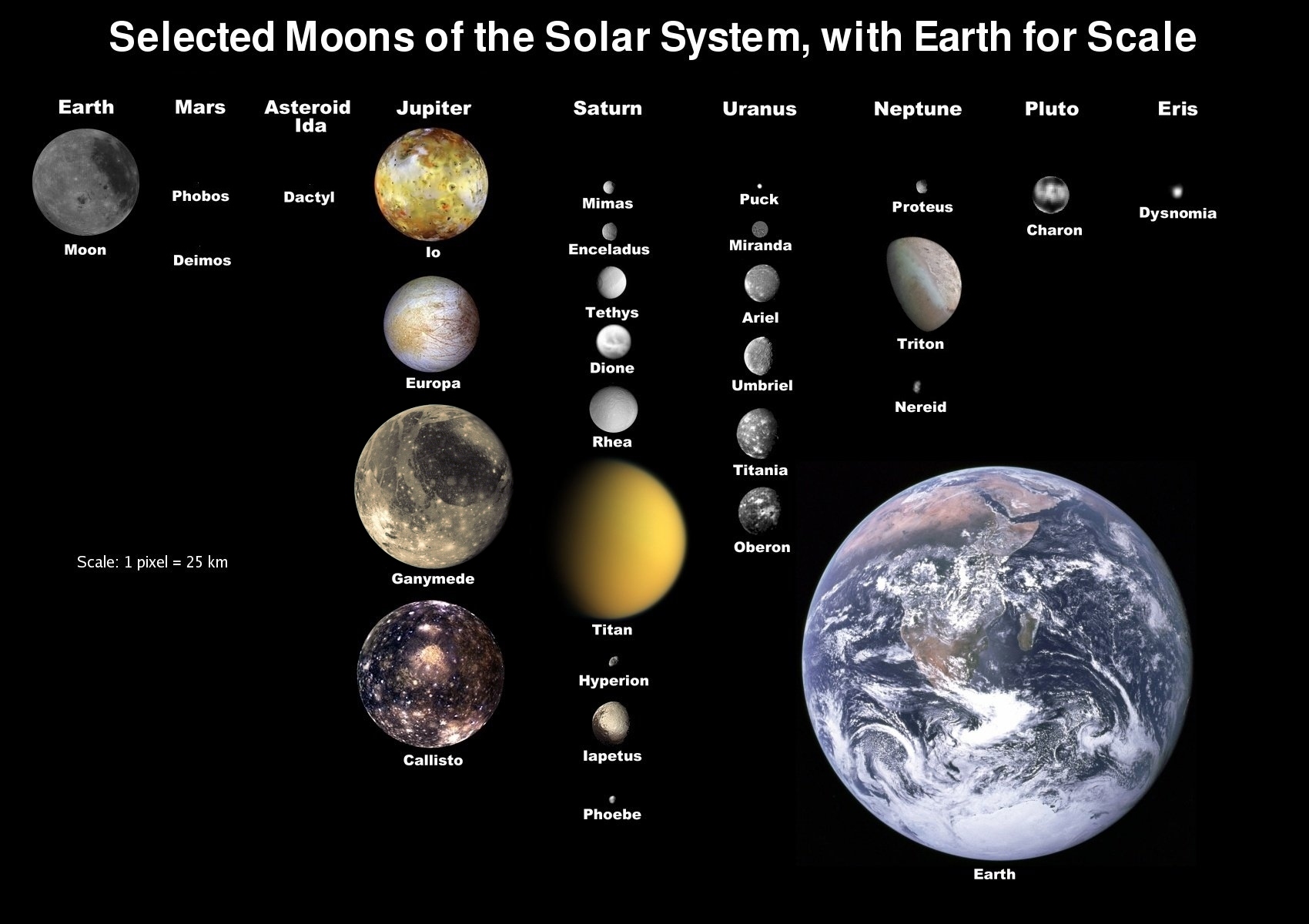| Natural satellites in the Solar System |

|
 |
|
A natural satellite or moon is a celestial body that orbits a planet or smaller body, which is called the primary. As of July 2009, 336 bodies are formally classified as moons. They include 168 orbiting six of the eight planets, 6 orbiting three of the five dwarf planets, 104 asteroid moons, and 58 satellites of Trans-Neptunian objects, some of which will likely turn out to be dwarf planets. The large gas giants have extensive systems of moons, including half a dozen comparable in size to Earth's moon: the four Galilean moons, Saturn's Titan, and Neptune's Triton. Saturn has an additional six mid-sized moons massive enough to have achieved hydrostatic equilibrium, and Uranus has five. Of the inner planets, Mercury and Venus have no moons at all; Earth has one large moon, known as the Moon; and Mars has two tiny moons, Phobos and Deimos. It has been suggested that a few moons, notably Europa, one of Jupiter's Galilean moons, may harbour life, though there is currently no direct evidence to support this claim. Among the dwarf planets, Ceres has no moons (though many objects in the asteroid belt do). Pluto has three known satellites, the rather large Charon and the smaller Nix and Hydra. Haumea has two moons, and Eris has one. QUESTIONS 1. What is a natural satellite? 2. At which position is the New Moon’s phase? 3. What are shadows on the Moon? 4. In which year was Deimos discovered? 5. How much you would weigh on the Moon? |
Links: |